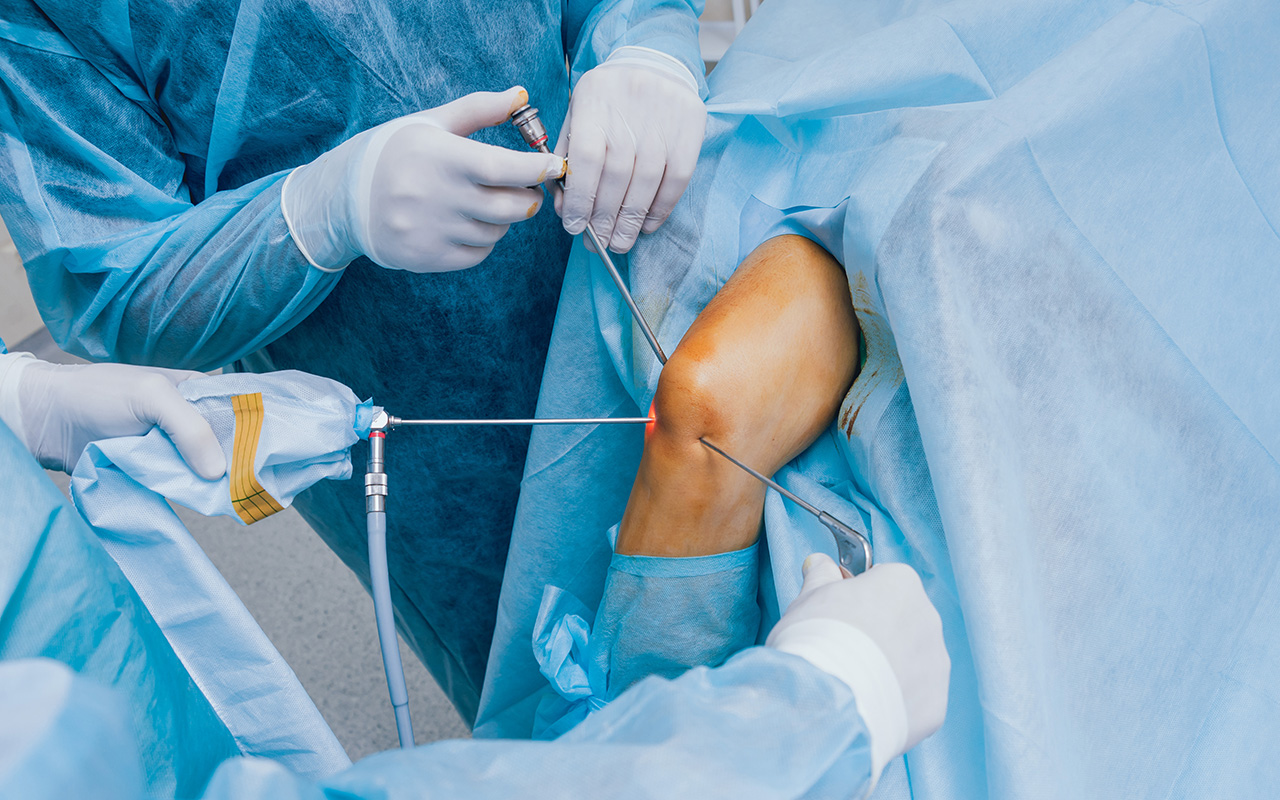Knee arthroscopy is a minimally invasive surgical procedure that is commonly used for the diagnosis and treatment of various knee conditions. It involves inserting a small camera, called an arthroscope, into the knee joint through small incisions. This allows the surgeon to visualize and access the knee structures without the need for a large open incision.
There are several benefits associated with knee arthroscopy. Firstly, it is considered a less invasive alternative to traditional open knee surgery. The small incisions used in arthroscopy result in less tissue damage, reduced pain, and shorter recovery time. Patients typically experience less scarring and a quicker return to normal activities compared to open surgery.
Another advantage is the ability to accurately diagnose knee problems. The arthroscope provides a clear view of the joint, enabling the surgeon to assess the extent of damage or injury. Diagnostic arthroscopy can detect conditions such as torn cartilage, ligament tears, and joint inflammation, allowing for targeted treatment plans.
Knee arthroscopy is also used for therapeutic purposes. During the procedure, the surgeon can repair or remove damaged tissues or structures in the knee. For instance, torn cartilage can be trimmed or repaired, and loose fragments can be removed. This helps to restore normal knee function and alleviate pain. Additionally, arthroscopy can be used for procedures such as ACL reconstruction, meniscus repair, and synovial biopsy.
Furthermore, knee arthroscopy is typically performed on an outpatient basis, meaning patients can go home the same day as the procedure. This eliminates the need for an extended hospital stay and reduces healthcare costs.
However, it is important to note that not all knee conditions can be treated using arthroscopy. Complex or severe cases may still require open surgery. Therefore, it is crucial for a thorough evaluation by a qualified orthopedic surgeon to determine if knee arthroscopy is the appropriate course of action.
In conclusion, knee arthroscopy offers numerous benefits for patients with knee problems. Its minimally invasive nature, accurate diagnosis capabilities, therapeutic interventions, and shorter recovery time make it a preferred option for many individuals experiencing knee pain or dysfunction.
Will I need a knee replacement after arthroscopy?
In arthroscopy, part of the meniscus is removed. As a result, the knee has considerably less support and absorbancy. In time, osteoarthritis in the knee worsens, and the only option for successful treatment is a total knee replacement.
Is it worth having a knee arthroscopy?
Minimally invasive procedures like knee arthroscopy usually require less recovery time than traditional (open) surgery. As you only need a few small stitches, you’re more likely to get back on your feet more quickly than with traditional surgery. You may also have less pain and a lower risk of infection.

What is the success rate of arthroscopic knee surgery?
Arthroscopic knee surgery is a minimally invasive technique of making repairs to the knee ligament or meniscus. The highly advanced procedure has an over 90 percent success rate.
When should you get a knee arthroscopy?
When Knee Arthroscopy is Recommended. Your doctor may recommend knee arthroscopy if you have a painful condition that does not respond to nonsurgical treatment. Nonsurgical treatment includes rest, physical therapy, and medications or injections that can reduce inflammation.
Is an orthopedic surgeon the same as an orthopedic specialist?
However, while all orthopedic surgeons are orthopedic specialists, not all orthopedic specialists are orthopedic surgeons. Any orthopedic specialist – surgical and otherwise – is qualified to assess, diagnose, and treat your orthopedic ailment using non-invasive treatments.Dec 4, 2019

Do orthopedic surgeons always recommend surgery?
Surgery isn’t the only thing you can expect when going to an orthopedic doctor. There are indeed many joint and bone problems that respond well to orthopedic surgery if other methods cannot give you a satisfactory result. We may recommend surgery for conditions and situations such as: Severe, bone-on-bone arthritis.
What is involved in orthopedics?
Orthopaedic surgeons are devoted to the prevention, diagnosis, and treatment of disorders of the bones, joints, ligaments, tendons and muscles. Some orthopaedists are generalists, while others specialize in certain areas of the body, such as: Hip and knee. Foot and ankle. Shoulder and elbow.
What is the difference between an orthopedic surgeon and an orthopedic specialist?
Orthopedists, often mistakenly referred to as orthopedic doctors, specialize in diagnosis, treatment, prevention and rehabilitation of musculoskeletal conditions. Orthopedic surgeons also diagnose, treat and prevent musculoskeletal problems, but they can perform surgery when necessary as well.

What is done in orthopedics?
Orthopedics is a medical specialty that deals with treating bones and muscles. Orthopedic surgery is the branch of medicine focused on concerned with diseases, injuries, and conditions of the musculoskeletal system relating to the body’s muscles and skeleton. This includes the joints, ligaments, tendons, and nerves.


